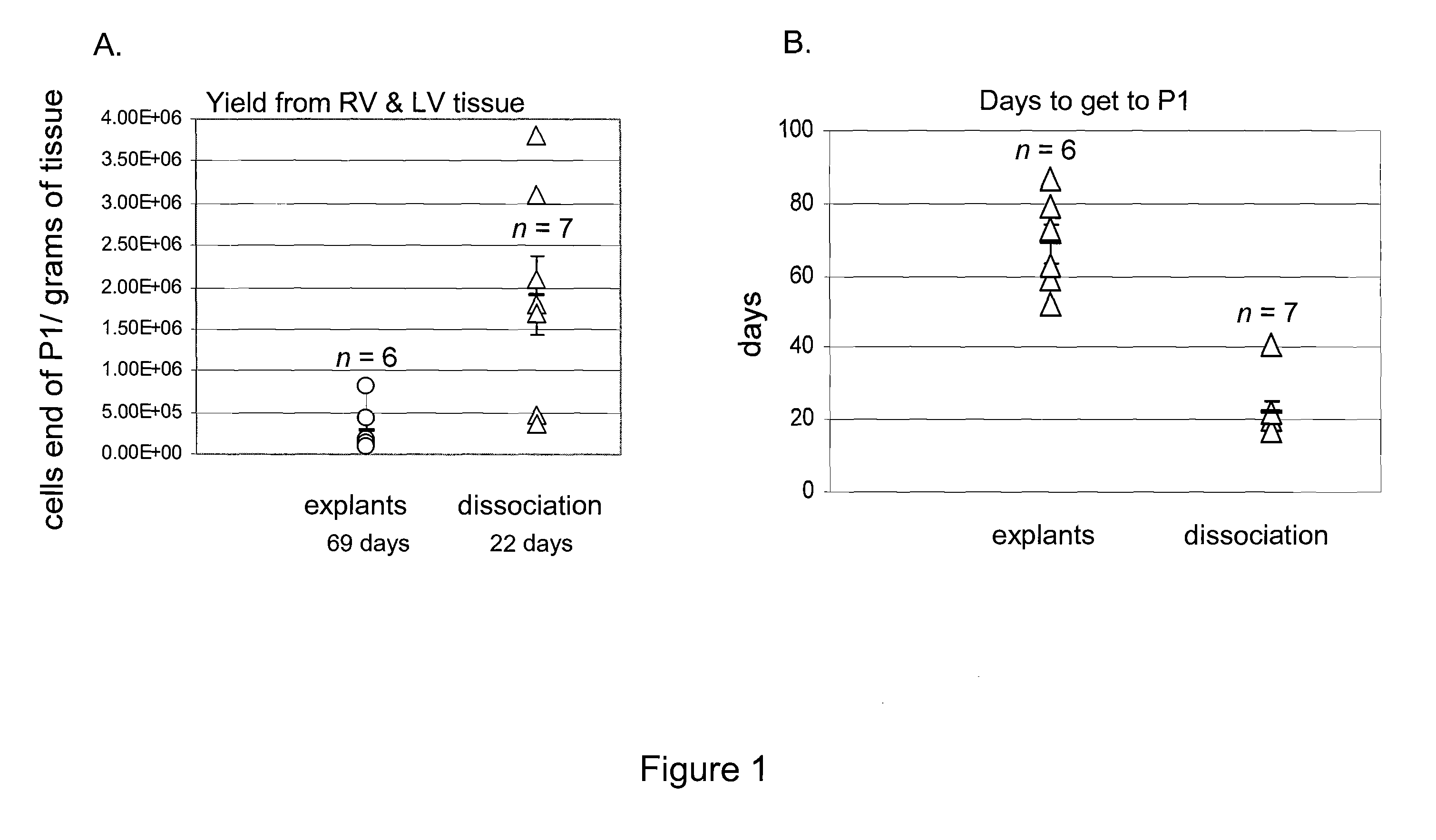Adult Human Cardiac-Derived Progenitor Cells
a technology of adult human cardiac and progenitor cells, applied in the direction of skeletal/connective tissue cells, drug compositions, biocide, etc., can solve the problems of significant comorbidity and/or fmite effectiveness, and achieve the effect of preventing fmite and thwarting cardiac transplantation and the use of left, ventricular assist devices
- Summary
- Abstract
- Description
- Claims
- Application Information
AI Technical Summary
Benefits of technology
Problems solved by technology
Method used
Image
Examples
experimental examples
The invention is further described in detail by reference to the following experimental examples. These examples are provided for purposes of illustration only, and are not intended to be limiting unless otherwise specified. Thus, the invention should in no way be construed as being limited to the following examples, but rather, should be construed to encompass any and all variations which become evident as a result of the teaching provided herein.
The materials and methods employed in the experiments disclosed herein and the results obtained are now described.
example 1
Human Cardiac-Derived Cells are Obtained from Tissue by Explants or Cell Dissociation Methodology
A. Materials and Methods:
Tissue Donors
Two sources were established for the procurement of human heart tissue: The National Disease Research Interchange (NDRI) and Methodist Hospital (Houston, Tex.). Twenty-one (21) donors contributed to these studies; 17 from NDRI and 4 from Methodist Hospital. Donor characteristics are summarized in Table 1.
TABLE 1Donor CharacteristicsGender10 female; 11 maleEthnic groups17 Caucasian; 3 African American; 1 Hispanic;1 unknownAge14, 21, 28, 28, 38, 39, 52, 54, 56, 57, 59, 59, 61,61, 62, 63, 66, 69, 71, 77, 84Time from cross12, 12.5, 12.5, 13, 14, 15, 17.5, 17.5, 18, 18.5, 20,clamp-time20, 20, 21, 23, 25, 26, average = 17.9processing (NDRI)
Explant Method
Tissue sample of ˜1 gram were derived from atria or ventricular biopsy specimens-and stored in cell culture media at 4° C. Isolated myocardial tissue was cut into 1- to 2-mm3 pieces, washed with Ca2+-, and ...
example 2
Characterization of Human-Derived Cardiac Cells Obtained Using the Dissociation Method
A. Materials and Methods
RT-PCR was performed on human derived cardiac cells obtained using the dissociation methods described above and Superscript One step RT-PCR from Invitrogen. Reverse transcription occurs at 48° C. for 30 minutes, denaturing for 2 minutes at 94° C. is followed by 40 cycles of 94° C. for 15 seconds, annealing at 55° C. (or as indicated) for 30 seconds, elongation at 72° C. for 30 seconds, the protocol ends with 10 minutes at 72° C.
B. Results
Human derived cardiac cells obtained by the cell dissociation method express a variety of markers that can be used in the isolation, purification, and selection of the cell. FIGS. 3A and 3B depict the results of RT-PCR performed on cells obtained from the left and right ventricles, respectively. RNA obtained from cells grown on ultra low attachment plates, collagen or poly lysine coated plates was probed for a variety of potential biomarkers...
PUM
| Property | Measurement | Unit |
|---|---|---|
| size | aaaaa | aaaaa |
| magnetic cell sorting | aaaaa | aaaaa |
| fluorescence | aaaaa | aaaaa |
Abstract
Description
Claims
Application Information
 Login to View More
Login to View More - R&D
- Intellectual Property
- Life Sciences
- Materials
- Tech Scout
- Unparalleled Data Quality
- Higher Quality Content
- 60% Fewer Hallucinations
Browse by: Latest US Patents, China's latest patents, Technical Efficacy Thesaurus, Application Domain, Technology Topic, Popular Technical Reports.
© 2025 PatSnap. All rights reserved.Legal|Privacy policy|Modern Slavery Act Transparency Statement|Sitemap|About US| Contact US: help@patsnap.com



